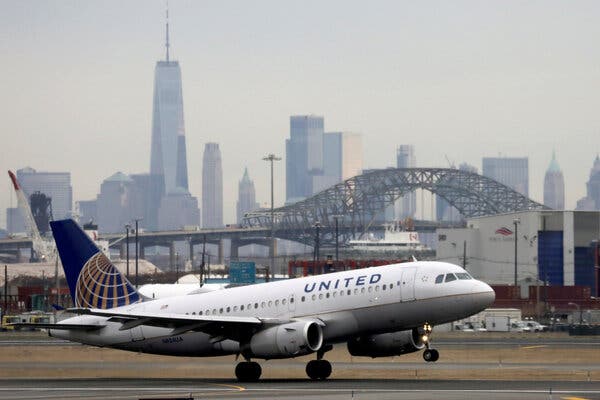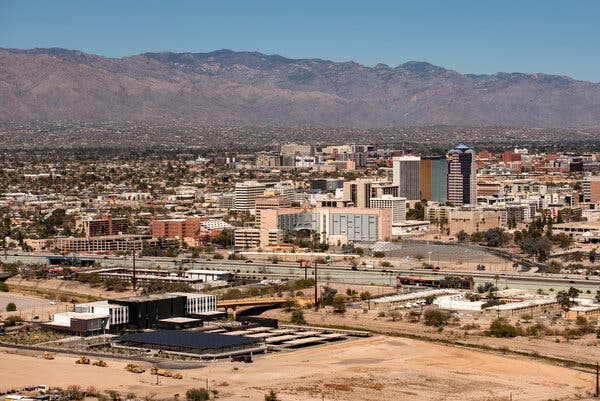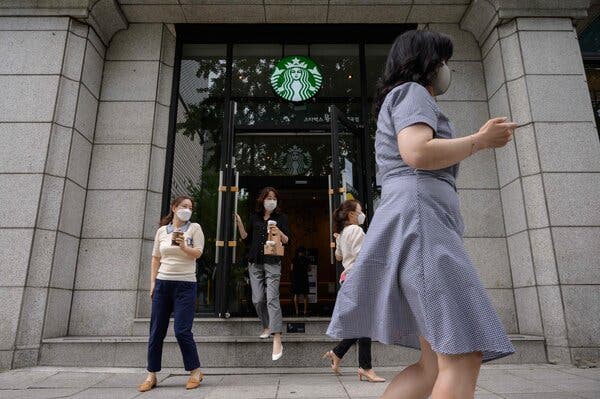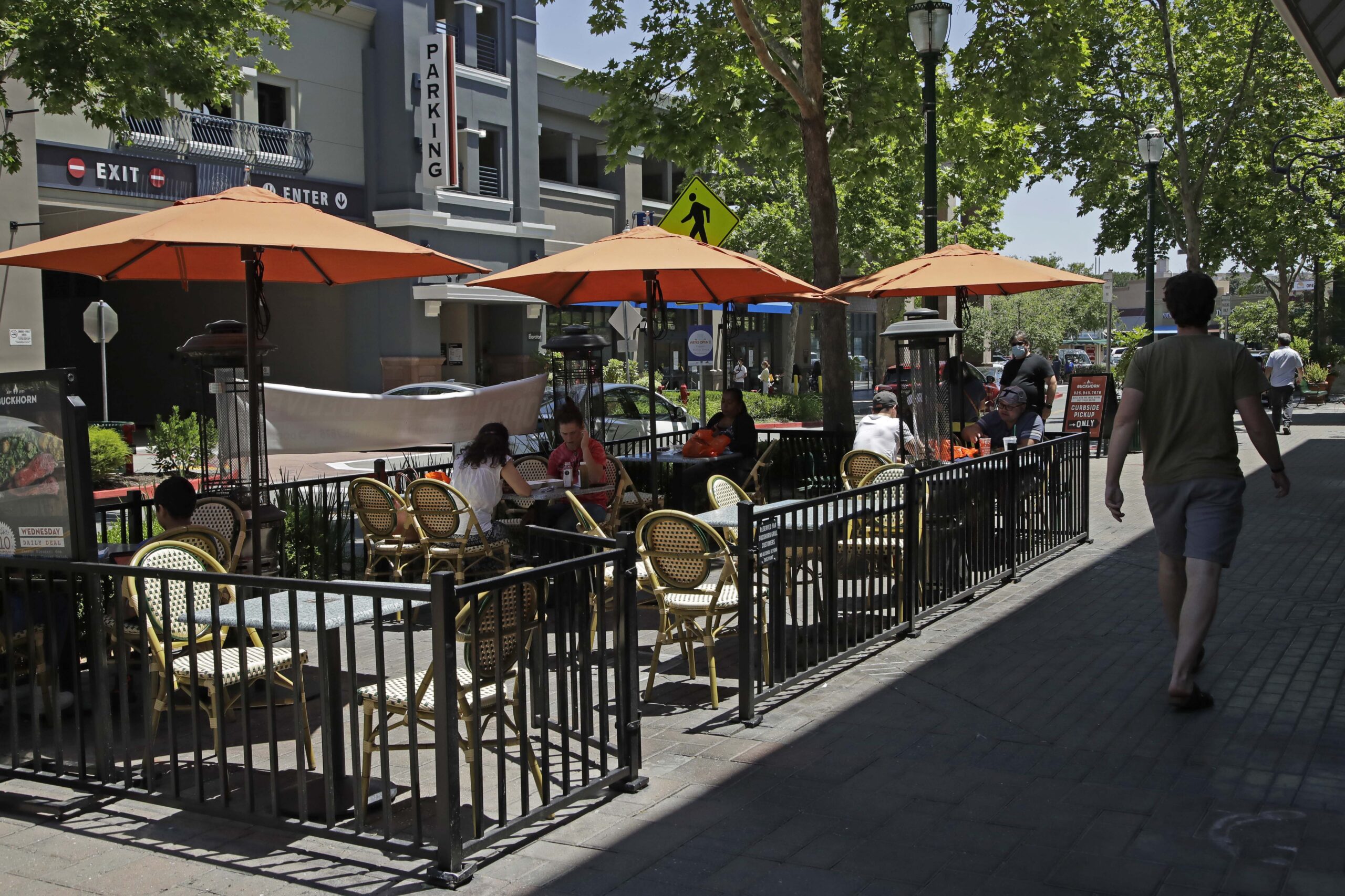Topps, known for its trading cards and Bazooka gum, is going public by merging with a blank-check firm in a deal that values the company at $1.3 billion, the DealBook newsletter was the first to report.
The transaction includes an investment of $250 million led by Mudrick Capital, the sponsor of the special purpose acquisition company, or SPAC, along with investors including Gamco and Wells Capital. Michael Eisner, the chairman of Topps and former chief executive of the Walt Disney Company, will roll his entire stake into the new company and stay on.
“Everybody has a story about Topps,” Mr. Eisner said. That’s what initially attracted him to the trading card company, which he acquired in 2007 via his investment firm, Tornante, and Madison Dearborn for $385 million. Buying Topps was a bet on a brand that elicits an “emotional connection” as strong as Disney, the company Mr. Eisner ran for 21 years.
In the years since Mr. Eisner’s initial purchase, Topps has focused on a shift to digital, starting online apps for users to trade collectibles and play games. It also created “Topps Now,” which makes of-the-moment cards to capture a defining play or a pop culture meme. (It sold nearly 100,000 cards featuring Senator Bernie Sanders at the presidential inauguration in his mittens.) And it has moved into blockchain, too, via the craze for nonfungible tokens, or NFTs.
The pandemic has driven new interest in memorabilia, especially trading cards. Topps generated record sales of $567 million in 2020, a 23 percent jump over the previous year.
The secondhand market is particularly hot, with a Mickey Mantle card recently selling for more than $5 million. “Topps probably made something like a nickel on it, 70 years ago,” said Jason Mudrick, the founder of Mudrick Capital. NFT mania will allow Topps to take advantage of the secondhand market by linking collectibles to digital tokens. Topps is also growing beyond sports, like its partnerships with Marvel and “Star Wars.”
It continues to see value in its core baseball-card business, as athletes come up from the minor leagues more quickly. “The trading card business has been growing for the last several years,” Michael Brandstaedter, the chief executive of Topps, said. “While it definitely grew through the pandemic — and perhaps accelerated — it did not arrive with the pandemic.”
That resilience is part of the bet that Mudrick Capital is making on the 80-year old Topps. It’s a surer gamble, Mr. Mudrick said, than buying one of the many unprofitable start-ups currently courting SPAC deals. “Our core business is value investing,” he said.

Jeff Bezos, Amazon’s founder and chief executive, said on Tuesday that he supported an increase in the corporate tax rate to fund investment in U.S. infrastructure.
President Biden is pushing a plan to spend $2 trillion on infrastructure improvements, in part by raising the corporate tax rate to 28 percent, from its current rate of 21 percent.
Mr. Bezos said in a statement on Amazon’s corporate website that he applauded the administration’s “focus on making bold investments in American infrastructure.”
“We recognize this investment will require concessions from all sides — both on the specifics of what’s included as well as how it gets paid for (we’re supportive of a rise in the corporate tax rate),” Mr. Bezos said.
For years, Amazon has been a model for corporate tax avoidance, fielding criticism of its tax strategies from Democrats and former President Donald J. Trump. In 2019, Amazon had an effective tax rate of 1.2 percent, which was offset by tax rebates in 2017 and 2018, according to the Institute on Taxation and Economic Policy, a left-leaning research group in Washington. In 2020, the company paid 9.4 percent in taxes on U.S. pretax profit of about $20 billion, the group said.
The company has said in the past that it “pays all the taxes we are required to pay in the U.S. and every country where we operate.”
Companies employ varied strategies to reduce their tax liabilities. In 2017, the same federal bill that lowered the tax rate to 21 percent expanded tax breaks, including allowing the immediate expensing of capital expenditures. The goal was to lift investment, but the change also caused the number of profitable companies that paid no taxes to nearly double in 2018 from prior years.
The global economy is on firmer ground one year into the pandemic thanks to the rollout of vaccines, the International Monetary Fund said on Tuesday. But the recovery will be uneven around the world because of persistent inequality and income gaps.
“Emerging market and developing economies are expected to suffer more scarring than advanced economies,” the I.M.F. said in its World Economic Outlook report, which projected 6 percent global growth in 2021. Here are projections for the growth of some individual countries:
-
The United States economy will expand 6.4 percent this year, after contracting 3.5 percent the year before, while Britain will grow 5.3 percent this year, after shrinking 9.9 percent in 2020.
-
China, the world’s second-largest economy after the United States, is expected to grow 8.4 percent this year, after expanding 2.3 percent in 2020.
-
India’s economy is expected to see the biggest jump among major economies and climb 12.5 percent this year, after contracting 8 percent last year.

United Airlines said on Tuesday that it had started accepting applications to its new pilot school, promising to use scholarships, loans and partnerships to help diversify a profession that is overwhelmingly white and male.
The airline said it planned to train 5,000 pilots at the school by 2030, with a goal of half of those students being women or people of color. The school, United Aviate Academy in Phoenix, expects to enroll 100 students this year, and United and its credit card partner, JPMorgan Chase, are each committing $1.2 million in scholarships.
About 94 percent of aircraft pilots and flight engineers are white and about as many are male, according to federal data. United said 7 percent of its pilots were women and 13 percent were not white.
Airlines have had more employees than they needed during the pandemic, when demand for tickets fell sharply, and they have encouraged thousands, including many pilots, to retire early or take voluntary leaves. Since September, nearly 1,000 United pilots had retired or taken leave. Last week, the airline said it would start hiring pilots again after stopping last year.
But the industry is facing a long-term shortage of pilots because many are nearing retirement age and many potential candidates are daunted by the cost of training, which can reach almost $100,000 after accounting for the cost of flight lessons.
United is the first major U.S. carrier to run its own pilot academy, although many foreign airlines have run such programs for years. The company said it hoped the guarantee of a job after graduation would be a draw. In addition to the 5,000 pilots it plans to train, United said it would hire just as many who learned to fly elsewhere.
United Aviate is meant for people with a wide range of experience, from novices who have never flown to pilots who are already flying for one of United’s regional partners. A student with no flying experience could become a licensed pilot within two months and be flying planes for a living after receiving a commercial pilot license within a year, the airline said. Within five years, that person could fly for United after a stint at a smaller airline affiliate to gain experience.
The airline said it was also working with three historically Black colleges and universities — Delaware State University, Elizabeth City State University and Hampton University — for recruitment. The first class of 20 students is expected to start this summer.

Air France on Tuesday said it would receive a new bailout from the French government worth 4 billion euros ($4.7 billion) to help the beleaguered airline cope with mounting debts as a third wave of pandemic lockdowns around Europe prolong a slump in continental air travel.
The support comes on top of €10.4 billion ($12.3 billion) in loans and guarantees that Air France and its partner, the Netherlands-based KLM, received from the French and Dutch governments last year.
Air France-KLM chief executive, Benjamin Smith, citing an “exceptionally challenging period,” said the funds would “provide Air France-KLM with greater stability to move forward when recovery starts, as large-scale vaccination progresses around the world and borders reopen.”
Bruno Le Maire, France’s finance minister, said Tuesday that the new aid is taking the form of a state-backed recapitalization, which involves converting €3 billion in loans the government granted the airline last year into bonds with no maturity, as well as €1 billion in fresh capital through the issuance of new shares.
The French government is the airline’s largest shareholder, at 14.3 percent. The agreement could allow the government to raise its stake as high as 30 percent, Mr. Le Maire and Air France said, by buying some of the new shares. China Eastern Airlines, also a large shareholder, will also participate, Air France said.
Air France-KLM lost two-thirds of its customers last year, and its debt has nearly doubled to €11 billion. It expects an operating loss of €1.3 billion in the first quarter.
As vaccinations speed ahead in the United States, air travel has started to recover, fueling a return of ticket sales. Delta Air Lines announced it would add more passengers and start selling middle seats for flights starting May 1.
By contrast, Europe’s vaccine rollout has faltered and variants of the virus have gained ground, prompting renewed travel restrictions. That has left major flagship air carriers, including Air France-KLM, Lufthansa of Germany, and Alitalia of Italy, struggling.
The French government recently cut its economic growth forecast for 2021 to 5 percent, down from 6 percent.
Air France’s board approved the deal on Tuesday after the French government and European regulators agreed on the terms.
The Dutch government is holding separate talks with European regulators over converting a €1 billion loan to KLM into hybrid debt in return for slot concessions at the Schiphol Airport in Amsterdam.
Air France employs tens of thousands of workers in France and is considered too big to fail. Still, Mr. Le Maire said the aid was not a “blank check,” adding that the company would have to “make efforts on competitiveness” in exchange for the support and must continue to reduce its carbon emissions.
To conform to European competition rules, Air France was forced to relinquish 18 slots per day, representing nine round-trips, to competing airlines at Orly, Paris’ second-largest airport after Charles de Gaulle.

Some midsize cities — like Austin, Texas; Boise, Idaho; and Portland, Ore. — may be poised to rebound faster than others because they have developed strong relationships with their local economic development groups.
These partnerships have established comeback plans that incorporate a number of common goals, like access to affordable loans, relief for small businesses and a focus on downtown areas, Keith Schneider reports for The New York Times.
In Tucson, the revitalization plan, which goes into effect this month, calls for assessing the effect of the pandemic on important business sectors, including biotech and logistics. Other provisions advocate recruiting talented workers and preparing so-called shovel-ready building sites of 50 acres or more.
City leaders are building on a five-year, $23 billion growth plan in industrial and logistics development in the Tucson region that resulted in 16,000 new jobs before the pandemic, according to Sun Corridor, the regional economic development agency that sponsored the recovery plan. Caterpillar and Amazon moved into the region, while Raytheon, Bombardier and GEICO were among the many prominent companies that expanded operations there.
Other cities are struggling to recover after pandemic restrictions emptied their central business districts. The question is how much these downtowns will bounce back when the pandemic ends.
“The number of square feet per worker has declined really dramatically since 1990,” said Tracy Hadden Loh, a fellow at the Brookings Institution. Couple that with recent announcements from companies like Google, Microsoft, Target and Twitter about remote work, and some cities could see less office construction activity.

Starbucks says it plans to eliminate all single-use cups from its South Korean stores by 2025, the chain’s first move of this sort as it seeks to reduce its carbon footprint.
The coffeehouse chain plans to introduce a “cup circularity program” in some stores beginning this summer, in which customers would pay a deposit for reusable cups that would be refunded when the containers are returned and scanned at contactless kiosks, the company said in a statement on Monday. The arrangement will be expanded to cafes across the country over the next four years.
“Starbucks Coffee Korea is a leader in sustainability for the company globally, and we are excited to leverage the learnings from this initiative to drive meaningful change in our stores and inform future innovation on a regional and global scale,” Sara Trilling, the president of Starbucks Asia Pacific, said in the statement.
South Korea has in recent years tried to cut back on disposable waste in cafes, banning the use of plastic cups for dine-in customers in 2018. Legislation introduced last year would require fast food and coffee chains to charge refundable deposits for disposable cups to encourage returns and recycling. Last year, the environmental ministry said it planned to reduce the country’s plastic waste by one-fifth by 2025.
The increased use of plastic packaging and containers amid the coronavirus pandemic has been a setback for initiatives aimed at reducing single-use plastic waste. In March 2020, Starbucks and other chains said they would no longer offer drinks in washable mugs or customer-owned cups to help prevent the spread of the virus.

U.S. stocks dipped on Tuesday, a day after Wall Street’s major benchmarks climbed to records.
The S&P 500 dipped 0.1 percent, and the Dow Jones industrial average fell 0.3 percent.
Last week, the S&P 500 climbed above 4,000 points for the first time amid signs that the economic recovery was strengthening, with manufacturing activity quickening and the biggest jump in jobs since the summer. The United States is administering three million vaccines per day on average, but the number of coronavirus cases has started to tick up again because of the spread of new variants.
That said, many investors have focused on the vaccine rollout and the potential impact of the Biden administration’s large spending plans, including the $2 trillion American Jobs Plan, intended to upgrade the nation’s infrastructure and speed up the shift to a green economy.
“Investors should not fear entering the market at all-time highs,” strategists at UBS Global Wealth Management said in a note on Tuesday, recommending stocks in the financial, industrial and energy sectors. The reopening of economies because of the vaccine rollout also favored small and medium-size companies, they wrote.
The Stoxx Europe 600 index rose 0.7 percent to a record in its first day of trading since Thursday because of the long Easter weekend. In Britain, mining companies led the FTSE 100 up 1.3 percent. The DAX in Germany rose 0.6 percent
Asian stock indexes were mixed. The Hang Seng in Hong Kong rose 2 percent and the Nikkei 225 fell 1.3 percent.
The yield on 10-year Treasury notes slipped to 1.65 percent.
Oil prices rose. West Texas Intermediate, the U.S. crude benchmark, rose 1.2 percent to about $59.33 a barrel.
-
Disney Cruise Line will suspend departures through June after reviewing guidance from the Centers for Disease Control and Prevention, the company said Tuesday on its website. The C.D.C. recommends that people avoid travel on cruises worldwide because of the high risk of contracting the coronavirus aboard ship. The cruise line also canceled sailings in Europe through Sept. 18. Guests who have paid their reservations in full can choose either a credit with Disney Cruise Line for a future sailing or a full refund.
In today’s On Tech newsletter, Shira Ovide explains why the technology industry was relieved by the Supreme Court’s ruling siding with Google over Oracle, and the ways this might be relevant for artists, writers and archivists.







